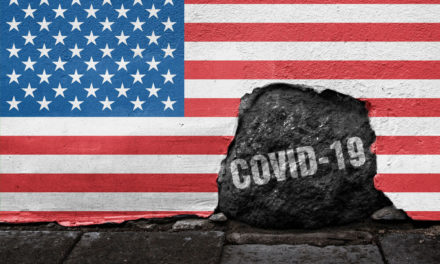The trillions of dollars in cash and loans unleashed by the Federal Reserve and U.S. political leaders in recent weeks is meant to build a financial bridge for the country to get beyond the coronavirus pandemic and restart the economy with little or no long-term damage.
But that mammoth effort is still likely to leave millions of additional Americans unemployed for an extended time, according to new economic forecasts that see the U.S. unemployment rate not just spiking to Depression-era levels in coming weeks, but remaining above a relatively high rate of 6% through the end of 2021.
That would represent around 4 million people added to the unemployment rolls for the foreseeable future — dousing hopes of a quick return to the pre-pandemic normal where the unemployment rate dipped as low as 3.5% and pay gains were accelerating for lower-wage workers.
“We are going to see some scarring in that regard. It is classic displacement,” said Karen Dynan, a Harvard University economics professor and former Treasury Department official who prepared a new global forecast for the Peterson Institute for International Economics, a Washington-based economics think tank. After jumping to perhaps 20% in coming months, Dynan said she anticipated the unemployment rate would come down “pretty quickly” into the single digits by the end of 2020.
“But even by the end of next year I think we are still going to be looking at something like a 6% unemployment rate,” she said. “A lot of people are not going to get their jobs back.”
A separate survey of 45 economists prepared by the National Association for Business Economics predicted a similar result. The median forecast was for a dramatic spike in the unemployment rate due to the social distancing measures and mandated store closures being used to fight the pandemic, but a more gradual decline during the recovery.
The NABE forecast sees an unemployment rate of nearly 10% at the end of 2020, and 6% through 2021.
Debating Recovery’s Shape Regarding Unemployment
The new forecasts add to the debate over what “shape” the evolving economic downturn and hoped-for recovery will take — whether a deep, but potentially sharp “V” that largely puts the economy back where it started, a more extended downturn and slower recovery that looks like a “U,” or the “L” shape of a protracted downturn with little uplift.
The separate forecasts are optimistic in that regard. Both see a devastating contraction in the second quarter of 2020 — as deep as -26.5% on an annualized basis, according to the NABE survey.
But assuming the virus is controlled — the ruling predicate of any current economic forecast — both see growth rebounding as of midsummer and accelerating from there as the impact of government benefits and any easing of social distancing rules begins to take hold.
“Panelists believe that the U.S. economy is already in recession and will remain in a contractionary state for the first half of 2020, as the COVID-19 pandemic severely restricts economic activity,” said NABE President Constance Hunter, chief economist for KPMG.
“Conditions will improve by the end of the year with support from aggressive fiscal and monetary stimulus,” she said.
But the outlook for persistent job loss is sobering in the face of the new programs the Fed, Congress and the Trump administration have approved in recent weeks to try to keep the economy “whole” through the pandemic and ready to restart once the health crisis passes.
A 6% unemployment rate is well above what Fed officials view as full employment. It is even a deeper blow considering the historically low unemployment rates reached over the past year in a job market that was beginning to pay dividends for racial minorities, less-skilled workers and others who typically do better later in an economic cycle.
Some of the persistence in job loss, Dynan said, may be the result of normal labor market “churn” but distorted by the crisis. In any given month, even in normal times, hundreds of thousands of people are laid off or fired — but for the last decade or so more than that have been hired as new jobs are created.
For the time being the job destruction may be fast, while the job additions come more slowly.
“We are going to be living somewhat differently because of the virus,” she said. “There are going to be some jobs that don’t come back … It is going to be lingering classic mismatch,” between the workers laid off and the jobs that do return.
© Copyright Thomson Reuters 2020.




